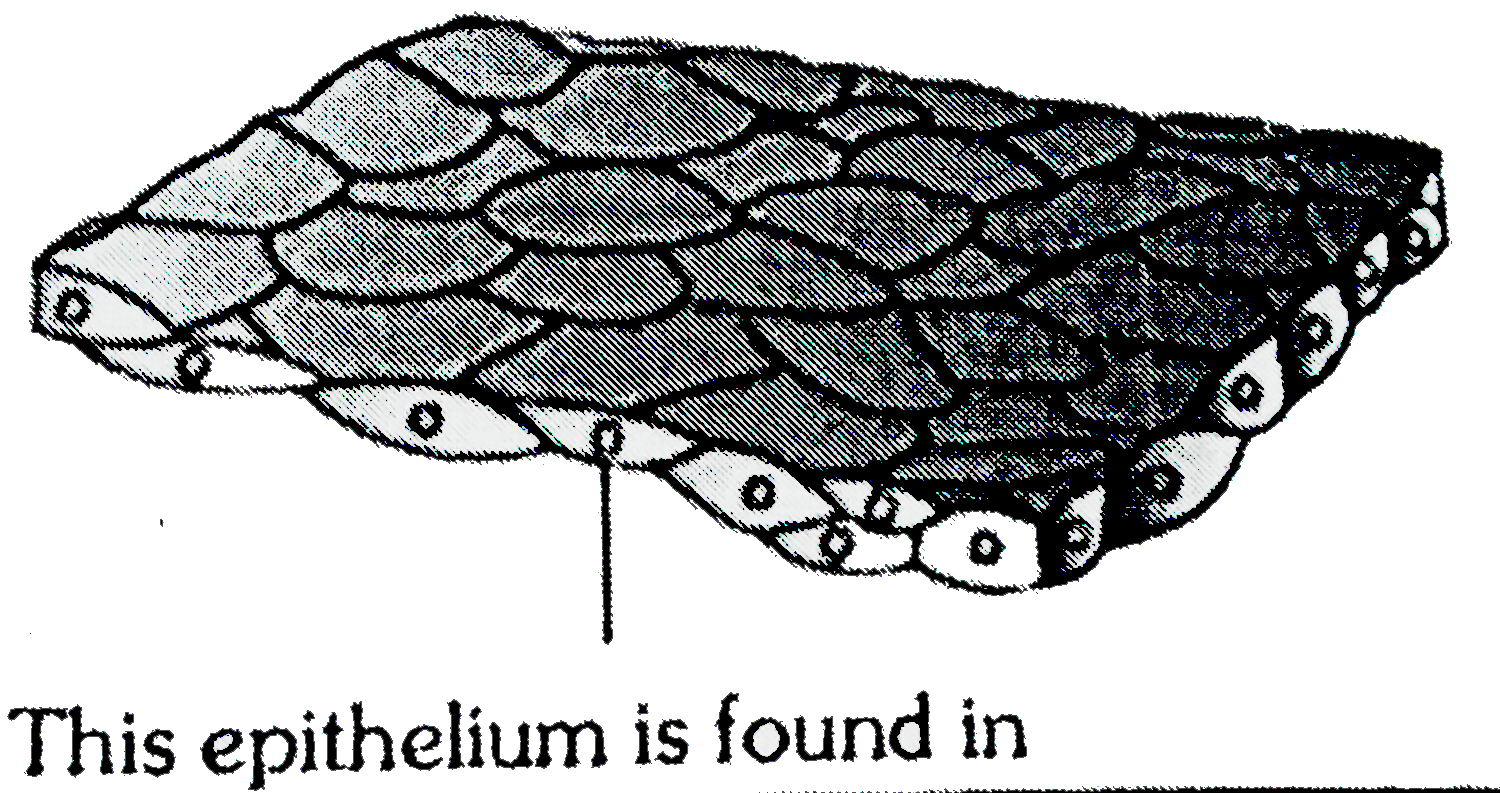Distinguish between : Simple epithelium and compound epithelium
Step-by-Step Solution
1. Definition of Simple Epithelium:
- Simple epithelium consists of a single layer of cells. This structure allows for easy diffusion and absorption of substances.
2. Definition of Compound Epithelium:
- Compound epithelium, on the other hand, is made up of multiple layers of cells. This structure provides greater protection against mechanical and chemical stress.
3. Function:
- The primary function of simple epithelium is to facilitate processes such as secretion, absorption, and filtration. It is involved in processes where exchange of materials is crucial.
- Compound epithelium serves mainly a protective function, safeguarding underlying tissues from damage, abrasion, and pathogens.
4. Location:
- Simple epithelium can be found in locations such as alveoli (air sacs in the lungs) and the endothelium (lining of blood vessels), where exchange and absorption are essential.
- Compound epithelium is located in areas that require protection, such as the esophagus, tongue, and skin, where it acts as a barrier against physical and chemical injury.
5. Cell Arrangement:
- In simple epithelium, the cells are arranged in a single layer, which can be further classified into types such as squamous, cuboidal, and columnar based on cell shape.
- In compound epithelium, the cells are organized in multiple layers, which can also be classified into types such as stratified squamous, cuboidal, and columnar.
Summary Table
| Feature | Simple Epithelium | Compound Epithelium |
|-----------------------|---------------------------------------|-----------------------------------------|
| Cell Layers | Single layer | Multiple layers |
| Function | Secretion, absorption, filtration | Protection against abrasion and pathogens |
| Location | Alveoli, endothelium | Esophagus, tongue, skin |
| Cell Arrangement | Single layer of cells (various shapes)| Multiple layers of cells (various types)|
- Simple epithelium consists of a single layer of cells. This structure allows for easy diffusion and absorption of substances.
- Compound epithelium, on the other hand, is made up of multiple layers of cells. This structure provides greater protection against mechanical and chemical stress.
- The primary function of simple epithelium is to facilitate processes such as secretion, absorption, and filtration. It is involved in processes where exchange of materials is crucial.
- Compound epithelium serves mainly a protective function, safeguarding underlying tissues from damage, abrasion, and pathogens.
- Simple epithelium can be found in locations such as alveoli (air sacs in the lungs) and the endothelium (lining of blood vessels), where exchange and absorption are essential.
- Compound epithelium is located in areas that require protection, such as the esophagus, tongue, and skin, where it acts as a barrier against physical and chemical injury.
- In simple epithelium, the cells are arranged in a single layer, which can be further classified into types such as squamous, cuboidal, and columnar based on cell shape.
- In compound epithelium, the cells are organized in multiple layers, which can also be classified into types such as stratified squamous, cuboidal, and columnar.
|-----------------------|---------------------------------------|-----------------------------------------|
| Cell Layers | Single layer | Multiple layers |
| Function | Secretion, absorption, filtration | Protection against abrasion and pathogens |
| Location | Alveoli, endothelium | Esophagus, tongue, skin |
| Cell Arrangement | Single layer of cells (various shapes)| Multiple layers of cells (various types)|
Topper's Solved these Questions
- STRUCTURAL ORGANISATION IN ANIMALS BOOK - ICSECHAPTER - STRUCTURAL ORGANISATION IN ANIMALS EXERCISE - Ncert Exercises (Differentiate Between )
28 Videos
- STRUCTURAL ORGANISATION IN ANIMALS BOOK - ICSECHAPTER - STRUCTURAL ORGANISATION IN ANIMALS EXERCISE - Test Your Progress (HOTS)
8 Videos
- SELF ASSESSMENT PAPER-3BOOK - ICSECHAPTER - SELF ASSESSMENT PAPER-3EXERCISE - PART II (SECTION C)
4 Videos
- STRUCTURE ORGANISATION IN ANIMALS -ANIMAL TISSUESBOOK - ICSECHAPTER - STRUCTURE ORGANISATION IN ANIMALS -ANIMAL TISSUESEXERCISE - REVIEW QUESTIONS (LONG ANSWER TYPE QUESTIONS)
12 Videos
Similar Questions
Knowledge Check
Ciliated epithelium is found in the lining of
AstomachBoviductCsalivary glandsDBowman's capsule
Simple epithelium is made of
View SolutionSimple epithelium is made of
View SolutionWhat is true for compound epithelium ?
View SolutionWrite the fuctions of compound epithelium.
View Solution
This epithelium is found in
View Solution
This epithelium is found in
View SolutionSimple epithelium is not effective in
View Solution
